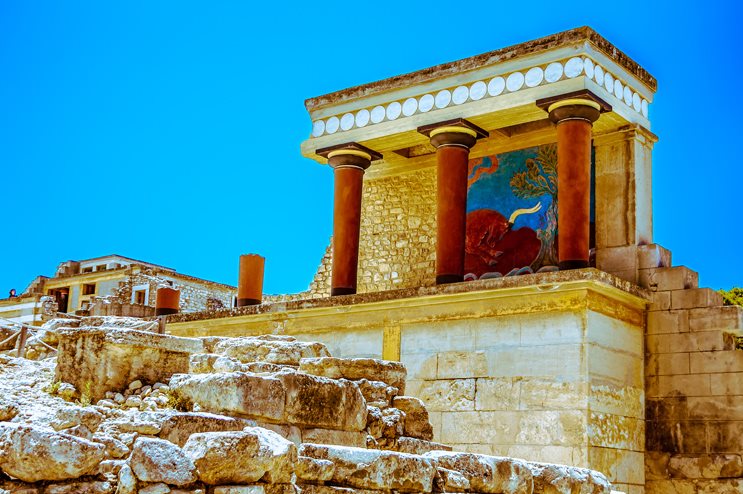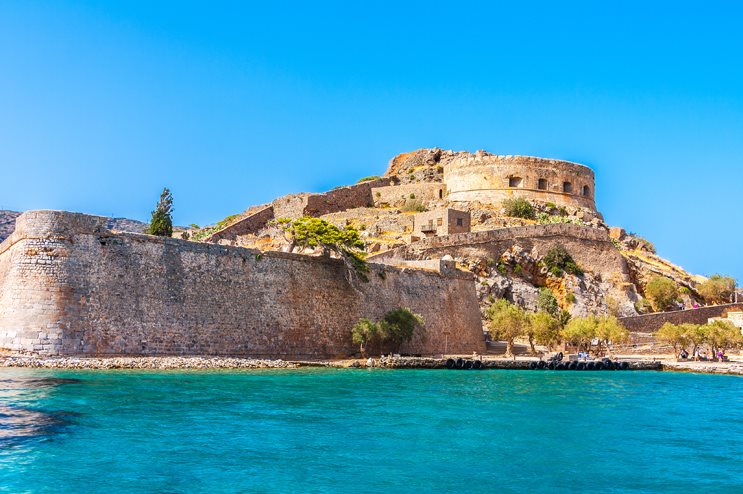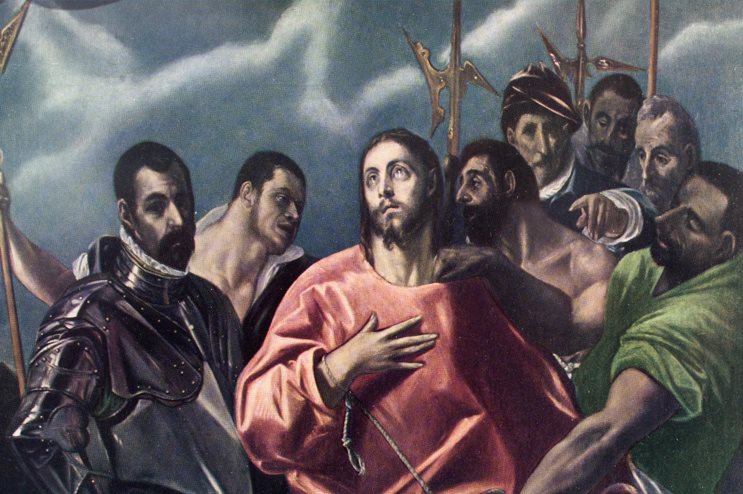The original Palaces of Knossos, Phaestos and Malia are built, and the oldest civilization in Europe, the Minoan, begins developing and expanding.
Journey back in time
1700 BC
1400 BC
395 BC
1204 AD
1669 AD
1898 AD
2017 AD
2000 - 1700 BC: The Minoan Civilization flourishes in the middle Bronze Age on the Mediterranean island of Crete.
1700 - 1400 BC: The Palace of Knossos, the legendary story of Daedalus & Icarus and the myth of Theseus & Ariadne.

Following the destruction of the original Palaces, probably due to earthquakes, the Minoan civilization reaches its peak. The Palaces of Knossos, Phaestos and Malia are rebuilt in a much greater scale, gaining mythical dimensions and giving birth to several myths and stories.
The famous story of Daedalus, architect of the mythical labyrinth (maze) that was built within the Palace of Knossos, has its origins here. Daedalus and his son Icarus flew towards the sun with self-crafted wings, escaping from the palace and King Minos, who kept them locked up in order not to reveal the secrets of the Labyrinth.
The ancient love story of Theseus and Ariadne (which ends up with the hero killing the Minoan half-man/half-bull monster, Minotaur, who lived in the labyrinth of Knossos Palace), also takes place here.
Around 1450 BC: The fall of the Minoan Civilization.
A terrible disaster (most probably caused by the massive eruption of Santorini volcano) leads to the total destruction and disappearance of the Minoan civilization.
1000 B.C. - 395 AD: Ancient times
According to written sources, a hundred towns were developed in Crete during Ancient times. Leading towns were Knossos, Gortyn, Eleftherna, Kydonia, Hierapytna, Lyttos, Chersonisos. The infamous Law Code of Gortyn was compiled in the 5th century b.C. and still stands engraved in a stone inscription in the ancient city. Crete fell to Romans during the 1st century b.C. and then Gortyn was settled as the capital of the united province of Crete and Cyrenaica. Numerous archaeological sites are accessible in Crete from all periods of Ancient times, Iron Age, Archaic, Classic, Hellenistic, and Roman respectively.
395 - 1204 AD: Crete becomes a province of Byzantium.
Crete becomes a Byzantine region (with the short break of the Arab occupation between 824 - 961 AD) and develops its religious character which remains alive until today. Important monuments, such as the church of Saint Titus at Gortys, continue to stand as reminiscent of another time.
1204 - 1669 ΑD: Venice occupied the island of Crete.

Crete passes under Venetian rule in 1211, and the great fortresses and monuments of that era remain at a very good condition until today. The fortifications of Heraklion, Chania, Rethymnon, as well as the Old parts of these cities, and numerous rural settlements and churches are the best examples of the Venetian impact on the history of Crete.
1541 AD: The birth of El Greco.

The world famous Renaissance painter, El Greco (Domenikos Theotokopoulos) is born in the city of Heraklion. His works ‘El Expolio' and ‘The Burial of the Count of Orgaz’, are both considered among the masterpieces of European art.
1669 - 1898 AD: Ottoman period
The surrender of Chandax (the place name of Heraklion during previous centuries) in 1669 A.D. concluded the Ottoman occupation of Crete. Ottoman influences are still visible in numerous monuments of the island. After series of Cretan revolts, Ottomans departed from Crete in 1898.
1898 - 2017 AD: Modern times
1898 AD-Today: Crete forms a significant part of the economy and cultural heritage of Greece, and one of the most visited destinations in Greece.
Crete after the short period of the Cretan Autonomous State (Cretan Polity), unites with mainland Greece in 1913. During World War II was conquered by the Germans (1941 – 1945). After that period, Crete was able to develop economically and culturally, becoming one of the strongest and most popular travel destinations in Greece.
